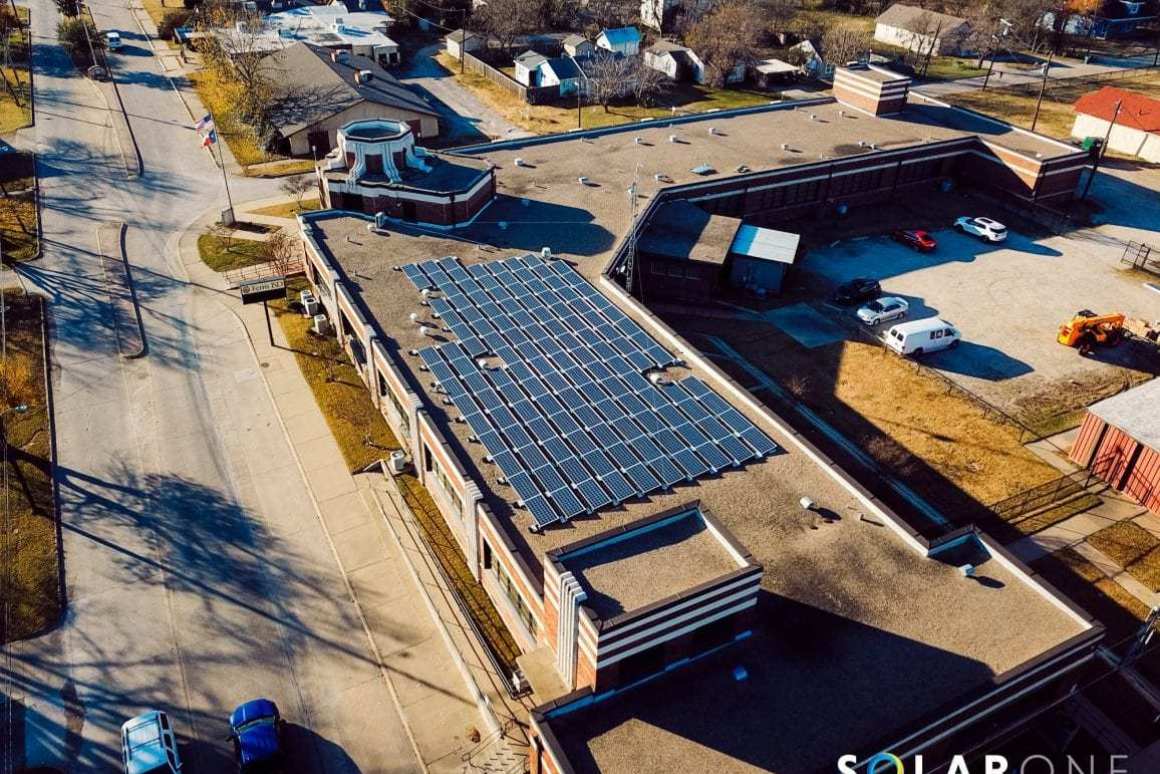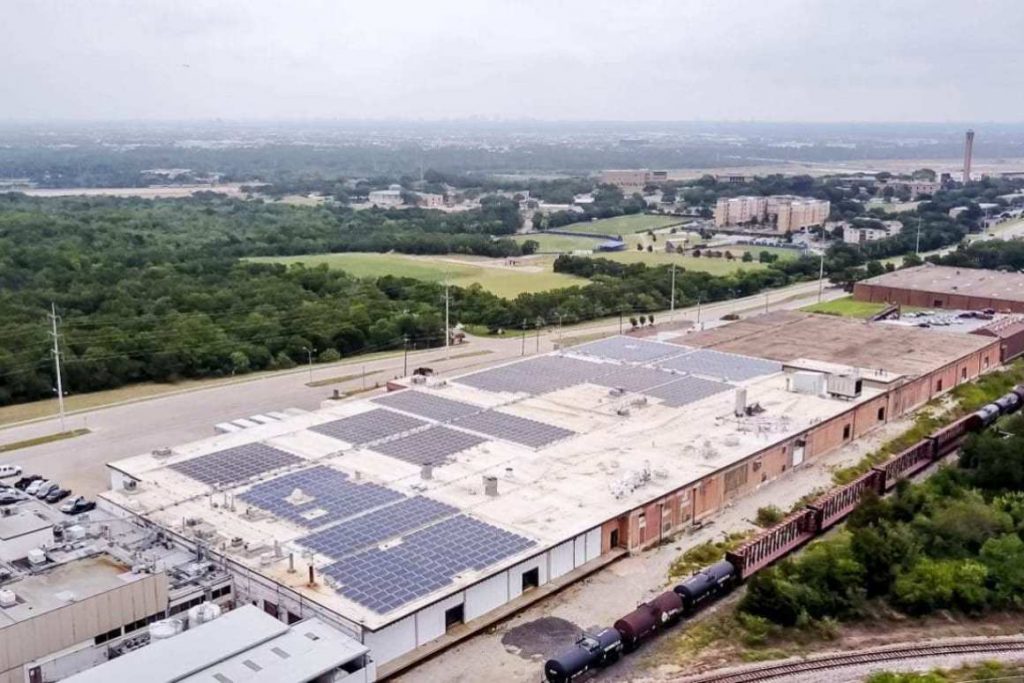Common Questions About Commercial Solar Financing
As of 2021 there are various different models to pay for a commercial solar system. We outline below common methods for financing solar panels for businesses along with the pros and cons. First we start with 3 Key questions:
1. What does it cost?
Solar installation is at its lowest prices in the last decade but there is a cost of doing nothing. Different models present different ROI timelines and capital expenditure required if at all.
2. Average time to get clean energy running for your business?
Depending on the site’s location, roof, utility..etc, the range is typically 6 months to a year. For larger more complex projects, or interconnection times, it is not uncommon to encounter setbacks that can lead to more delays.
3. Is the Tax Credit Going Away?
The ITC is a 22% tax credit for businesses who adopt solar. It was set to phase out starting this year (2017), but after a long bipartisan negotiation, the US Congress passed an extension of the solar ITC at the current 30-percent rate through 2019, followed by a phasing out period : 26 percent in 2020, 22 percent in 2021, and 10 percent in 2022. The time to invest in solar for maximum returns is now.
Common Types of Solar Financing Options

Power Purchase Agreements
What is it?
A solar power purchase agreement (PPA) is a financial agreement where a developer arranges for the design, permitting, financing and installation of a solar energy system on a customer’s property at little to no cost. The developer then sells the power generated to the host customer at a lower fixed rate than the local utility.
Who’s it for?
Medium to Large businesses who may already be buying new equipment or technology, don’t have the capital, or don’t want to take out another loan.
Average Payback Time
Immediately
Cons:
You do not own the solar array, another organization reaps the tax credit benefits.
Summary
No or low upfront capital costs: The developer pays for upfront costs of sizing, design, permitting, and installing the solar PV system. Without any upfront investment, the host customer is able to adopt solar and begin saving money as soon as the system becomes operational.
Reduced energy costs: Solar PPAs provide a fixed, predictable cost of electricity for the duration of the agreement and are structured in one of two ways. Under the fixed escalator plan, the price the customer pays rises at a predetermined rate, typically between 2% – 5%. This is often lower than projected utility price increases. Whereas the fixed price plan, maintains a constant price throughout the term of the PPA saving the customer more as utility prices rise over time.
Limited risk: The developer is responsible for system performance and operating risk.
Better leverage of available tax credits: Developers are typically better positioned to utilize available tax credits to reduce system costs. For example, municipal hosts and other public entities with no taxable income would not otherwise be able to take advantage of the Section 48 Investment Tax Credit.
Potential increase in property value: A solar PV system has been shown to increase residential property values. The long term nature of these agreements allows PPAs to be transferred with the property and thus provides customers a means to invest in their home at little or no cost.
**On average PPA agreements beat energy grid cost per KW by 35% – On average saving 10% or more on a PPA!
Solar Lease – Lease to Own
What is it?
A solar lease allows companies the ability to “lease-to-own” a solar system. Often the electrical savings generated from the solar system is more than what most monthly solar lease installment will be, creating an instant energy savings.
An Operating Lease may be the ideal financing structure for companies that don’t have the appetite for the Federal ITC or MACRS (tax credits or depreciation). The tax benefits of the Operating Lease are utilized by the lessor. That value is passed back to the lessee in the form of lower lease payments. Unlike a Capital Lease with a fixed purchase price at the end of the lease term, an Operating Lease requires a residual balance of “fair market value” at the end of lease term that typically ranges between 15-30% of the project total cost.
Who’s it For?
Medium to Large businesses, both non- and for profit with excellent credit (A+ – B), looking to ease into eventual ownership of a solar energy system. Great for owner occupied or tenant occupied.
Average Payback Time
One Year
Cons
You do not own the solar array, another organization reaps the tax credit benefits.
Summary
- Low Upfront Cost: There are little to no upfront costs for a lease, allowing you to reduce your initial capital investment.
- Save on Electricity Costs: Monthly lease payments are more than offset by the reduction in monthly electricity bills, resulting in savings on total electricity costs.
- Hedge against Rising Electricity Prices: Secure a low electricity rate at a fixed price per kilowatt-hour to reduce exposure to increasing energy rates.
- Flexible Options: At the end of the term, typically between 10 to 20 years, common to purchase the solar power system for a small, residual value. Or renew the lease or opt to have the system removed.
- Partnership Choices: Allows you to work with your existing equipment lease financial partners.
- Lease payments are lower than a capital lease
- The effective interest rate is actually a negative percentage
- Operating Leases are “off balance sheet” transactions for the Lessee
- Project Type: Commercial and industrial solar projects using Tier 1 Equipment
- 10 – year total term (Consisting of 7-year Lease with an additional 3-year Term Loan)
- Own the system at the end of the 7 or 10 – year term
- Can be roof mount, ground mount or carport install
Cash or Loan Agreement
What is it?
The simplest path to financing a commercial solar project is to purchase the system directly. If you have available capital and tax appetite to absorb massive federal tax credits and accelerated depreciation, cash purchases are your best option. When you own the solar installation, you can take advantage of the 30% federal credit and other local state solar incentives.

Who’s it for?
Medium to large businesses with capital to invest, and able to realize the 30% federal tax credit. Large corporations looking to hedge against future energy prices, or companies in climate disaster prone areas, looking to have a reliable, independent energy source. Corporations looking to meet sustainability goals and PR.
Average Payback Time
~4-7 years
Pros
Quick, Streamlined Process: Reduces the time required for a solar installation. Begin seeing a return on investment from solar electricity as soon as possible.
Attain Greatest Potential Savings: By avoiding third party expenses and interest rates – you can maintain complete control of your solar power system while reaping the highest savings from your solar investment.
Federal ITC: The owner of a commercial solar installation is eligible for a 30% federal investment tax credit. This is huge, and isn’t going to be around forever.
Protection from Rising Electricity Prices: Secure a low electricity rate for the lifetime of the system and which reduces exposures to volatile, and rising energy rates.
Promote Clean Energy: Take advantage of Renewable Energy Credits (RECs) and promote your organization’s corporate social responsibility message by becoming a solar powered company.
Climate Change Proof: In disaster prone areas, having your own energy system can make or break your business and help outlast against competitors.
Cons:
Large capital expenditure or having to take out a loan for a non-core business expense. Long pay back period.
Energy Savings Program (Proprietary)
What is it?
The Energy Savings Payment Model (ESP) is unique to Solar One. This model combines benefits from each traditional solar model into a revolutionary hybrid model where the client receives the tax advantages, minimizes the upfront expense, increases the property value, and receives instant energy savings. As the client receives energy savings, Solar One shares in a percentage of those savings to help pay down the system’s cost. Solar One assumes all risk and maintains the system for free until the system is paid off.
There is zero upfront expense, because the project is 100% paid for by incentives. We are able to pay for the cost of your solar system (that you own) by front loading available federal and state subsidies.
You merely share a portion of the tax savings with us until the project is paid off. This ensures immediate positive cash flow and ROI by month one. In some states such as Illinois or New Jersey, compelling statewide incentives and rebates provide more subsidies that pay for your solar system.
Who’s it For?
This model is for businesses with large energy usage. The model depends heavily on available tax liability at the organization or company.
Average Payback Timeline:
As soon as the system is operational, your company will realize lower operating expenses from the solar panels output of electricity.
Pros:
From the moment the system is installed, it produces power and brings savings to the company for 20-25 years. Without any upfront investment, businesses are able to adopt solar and begin saving money as soon as the system is installed and becomes operational. We’ve developed a program that allows U.S. businesses to install solar and pay off the system overtime using your federal and state subsidies. Your company has no risk.
Solar One will operate, insure, and maintain the system while the dealership owns the system outright and reaps the benefits of sun for decades to come.
Whether you go solar or not you’re going to purchase power either way.
Cons:
Your organization must have the tax liability.
Curious which model is right for your organization? Contact us and get a free solar proposal that compares the various options to reduce operating expenses.
Other Useful Resources
Common Commercial Solar Financing Models
Illinois Solar Incentives
Solar Energy FAQ
Solar Power Vocabulary 101